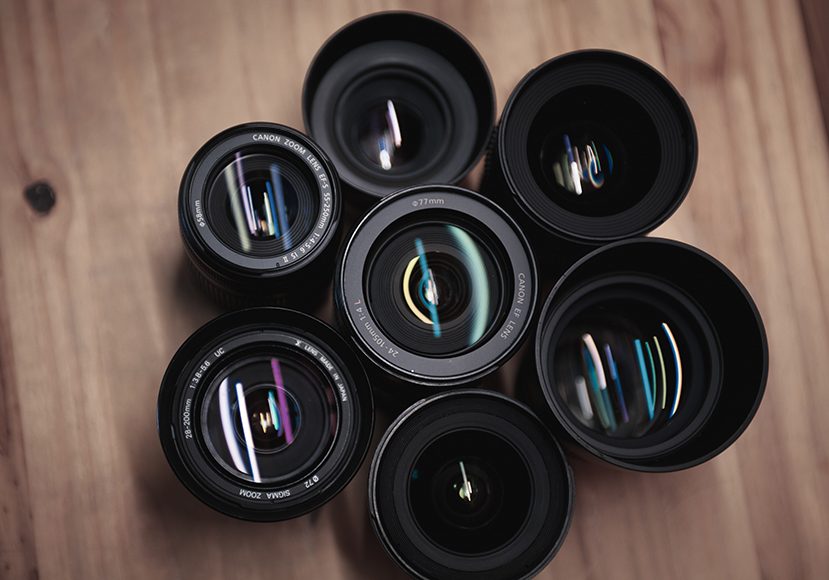
Best Lenses for Beginners in 2023 (All Brands)
Just entered the wonderful world of photography and wondering which beginner lenses you should buy first? Here's what you should have in your kit!
As a beginner photographer, you don’t need a lot of lenses.
In fact, when I started photography many years ago, all I had was a fixed-lens camera with a 50mm focal length.
When you’re a beginner, I recommend you buy 2 lenses: a prime lens and a zoom lens.
By using this combination, you’ll start to understand which is better suited to your needs.
(Personally, I mostly use primes, but I also have a zoom lens to take photos of my son’s soccer games!)
As time goes by and you gain experience and knowledge of how to take better photos, you can start buying more lenses.
In this guide, I’ve included all the lenses a beginner should ever consider.
If you have the budget, by all means – get one of each.
However, my advice is to pick one prime and one zoom from the selection below and start shooting.
- Related: Best cameras for beginners
Table of Contents
What are the Best Lenses for Beginner Photographers?
1. A 50mm Lens (Best Standard Prime for Beginners)
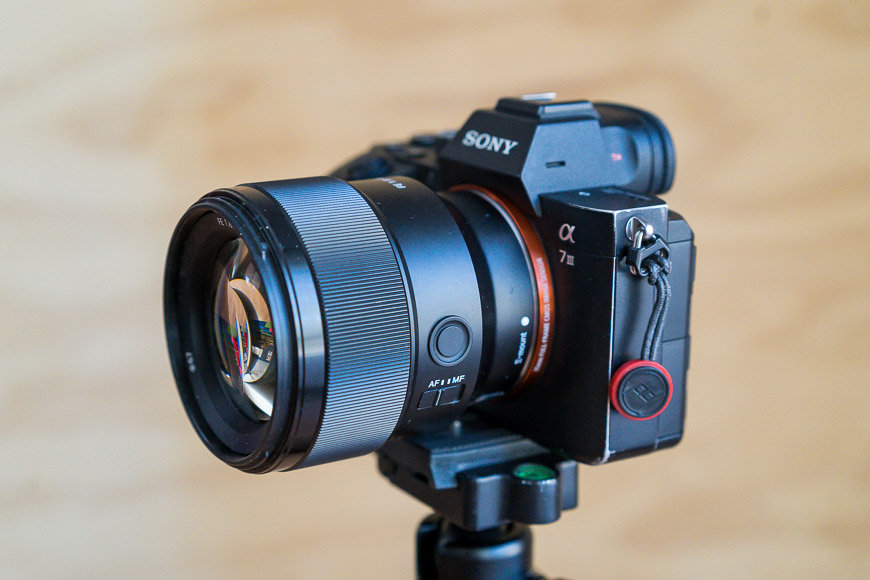
One of the lenses I’ve used most of all since starting photography is my 50mm prime lens.
It’s one of the best lenses for beginners because there’s something extremely comfortable about this focal length. You are neither too close to your subject, nor too far away.
It’s wide enough to allow you to take good street, landscape, and travel photographs, while still allowing you the scene-cropping and compression to take great portraits.
50mm lenses are also normally small enough to be unobtrusive. This is a comfort to beginner photographers who may be slightly nervous about photographing especially in public places.
And because camera brands know it’s such a great all-round lens and such a great lens for beginners, they often make their 50mm primes nice and fast, with wide apertures, so you can use them in low-light conditions too.
Something else to bear in mind is that, given their popularity, brands often produce more than one version of their 50mm lenses.
For example, Canon makes a 50mm f/1.2, an f/1.4, and an f/1.8. Although the f/1.8 is made of plastic, it’s a great, robust, lightweight lens with excellent low-light performance, and it costs a tenth of the price of the f/1.2.
Buying the cheaper version is a good way for beginners to test out this focal length before fully committing to expensive glass.
Recommended 50mm lenses for beginners:
- Sony fe 50mm f/1.8
- Canon EF 50mm f/1.8 STM Lens
- Nikon AF-S Nikkor 50mm f/1.8G
- Fujifilm 50m f/2
- Canon RF 50mm
2. A 24mm-70mm Lens (Best Short Telephoto for Beginners)
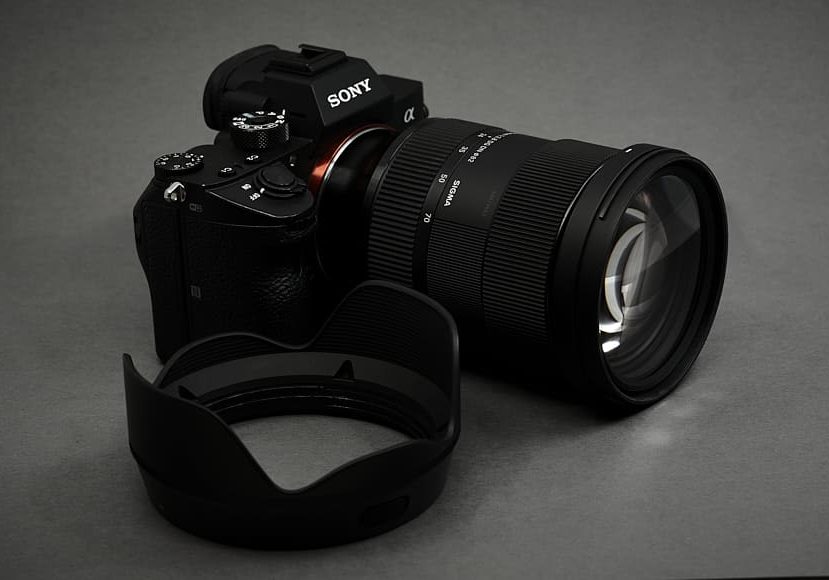
This is a lens I use as much as the 50mm, even now.
In fact, when I’m working, I often have one body with the 50mm, and one with the 24-70mm.
It’s a fantastic multipurpose lens for everyday use.
Its focal lengths allow you to react quickly to whatever situation you find yourself in.
See something close-up you want to photograph? Zoom-out. See something far away? Zoom-in.
Although I love that prime lenses force you to physically move away from or towards the action, it’s incredibly handy sometimes to have a zoom lens that lets you stay in one place.
But whatever you’re doing, standing still or moving around, 24-70mm zoom lenses lend themselves to a versatile shooting style.
Zoomed out, you have a good focal length for landscapes, street scenes, and architecture.
Zoomed in, you have a lens for detail shots and portraits.
Plus there’s that whole area in-between, which will give you the means to photograph most of the things the world throws at you.
Recommended 24-70mm lenses for beginners:
- (For Sony) Sigma 24-70mm f/2.8
- (For Nikon) Sigma 24-70mm f/2.8
- (For Canon) Sigma 24-70mm f/2.8
- Fujinon XF16-55mm f/2.8
3. An 85mm Lens (Best Portrait Lens for Beginners)

If you’re the kind of photographer who takes a lot of portraits, then an 85mm lens should be part of your kit bag.
This is the kind of focal length that forces you to stand several feet back from your subject (unless you are shooting extreme face detail), and that’s what gives you the compression to use depth of field to separate your subject from their background.
If you invest in one with a low aperture, you’ll also get beautiful bokeh and great low-light performance.
I’ve also found this focal length can work well in other situations too.
Because of the level of compression an 85mm lens gives you, it can lead to some interesting compositions when shooting landscapes and architecture.
If you’re a beginner who is just getting started as a professional photographer, this is also a good lens to own from a professional standpoint.
With an 85mm lens, you’ll be well-positioned to cover not only portrait shoots but corporate events and weddings too.
You should compare 50mm with 85mm to see which focal length is best suited to your needs.
Recommended 85mm lenses for beginners:
4. A 35mm Lens (Best Walk-Around Prime for Beginners)
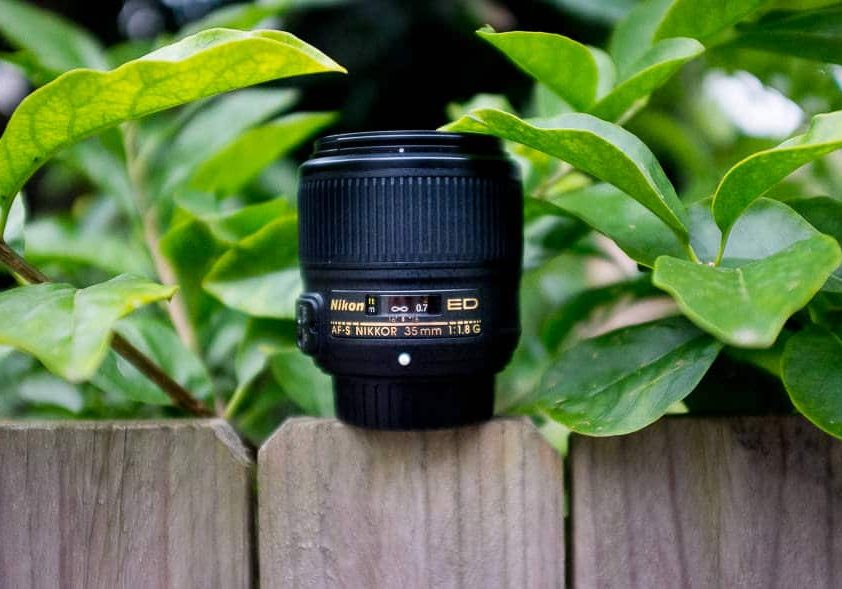
There’s something special about the 35mm focal length. It’s a classic.
They are pleasant lenses to shoot with because the framing feels very natural and similar to the field of view we see when looking at the world through our eyes.
With a 35mm, nothing feels too close or too far away. The perspective feels ‘right’.
For this reason, a lot of the shots you see in magazines and newspapers are shot with 35mm, and many point-and-shoots come with this focal length fixed.
Many photographers consider 35mm lenses are the perfect focal length to practice your skills with as a beginner (and beyond), to hone your eye.
Because the field of view is so close to the one you have without a camera, it trains your eye to see compositions that your eye will still look for naturally when you’re not shooting.
But, when you are shooting, you’ll have the versatility to shoot a good range of subjects from landscapes to street scenes, and architecture to playing puppies. Yes, puppies.
Recommended 35mm lenses for beginners:
5. A 70-200mm Lens (Best Medium Telephoto for Beginners)

When paired with 35mm or 50mm prime (or with a 24-70mm), one of these beasts will give you a MASSIVE focal range.
Clearly, it’s not your traditional walk-around lens but, having said that, it is an interesting lens to walk around with.
An important thing to practice as a beginner (and to keep practising as you become more experienced), is experimenting, and pushing yourself out of your comfort zone.
One way you can do this is by limiting yourself to shooting with a single focal length, and another is by using a zoom lens or telephoto lens that’s not normally used for shooting what you’re shooting.
Hear me out.
I often go out to take photographs with a 70-200mm, simply because it makes me uncomfortable.
That discomfort makes me have to work extra hard and I have to figure out compositions in a different way. But doing that exercises my photo muscles, and I often end up getting some really interesting images.
But aside from that, it’s a genuinely useful lens to have, both for general and professional use.
Its focal range will allow you to get close up to landscapes, buildings, or people, who are far away.
Yes, although these lenses are big and hard to hide, they can still be great for candid street photography or portraits.
Even some professional portrait photographers swear by this lens for studio portrait sessions. The distance it gives them from their subject can help the subject relax, plus the amount of compression it creates produces beautifully blurred foregrounds and backgrounds.
Plus, for shooting sports and wildlife, or if you’re getting into weddings or corporate events, they’re pretty much a must-have.
Recommended 70-200mm lenses for beginners:
6. A 16-35mm Lens (Best Wide Angle for Beginners)

For some, this lens is a staple.
It contains your 35mm perspective, which is great for all the reasons already outlined in this guide,
But it also goes down further to a focal length which is wide, but not too wide (like a 10mm). While it will help you get a wider perspective, you’re not going to end up with distorted images.
So, what is it good for?
Well, it will force you to get closer to and interact with your subjects if you’re taking street photos, and that’s always a good way to create more intimate images.
It’s also good for landscapes. Did I say good? I meant great. At 16mm you can really fit in those sweeping vistas.
It’s also a focal length that will allow you to take contextual or situational portraits.
With your standard portrait you normally have the subject in the centre of, or completely filling, the frame.
With a contextual portrait (and these are a staple of both editorial and commercial portraits), while the subject is still the focus of the image, the scene is equally important, as it tells part of the story.
16-35mm zoom lenses will let you fit that information into the frame and express that part of the story.
So, all in all, this isn’t your typical everyday lens for beginners, but it’s definitely one to consider.
Recommended 16-35mm lenses for beginners:
- Canon
- Nikon
- Sony
- Canon RF 14-35mm
- Nikon Z 14-30mm
- Canon 17-40mm (cheaper Canon alternative)
7. A 100mm or 105mm (Best Macro Lens for Beginners)
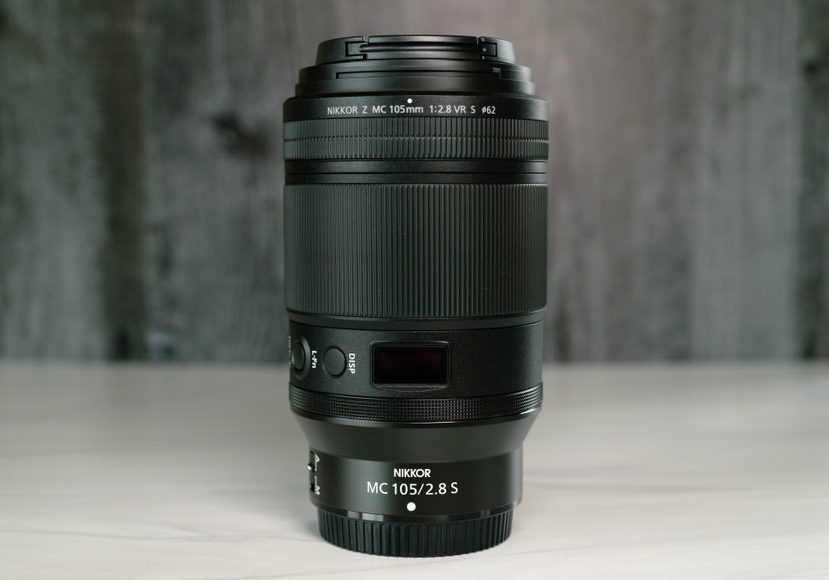
Macro lenses are the secret lenses.
Most people, when you mention macro, think of close-up photography, insects, raindrops on blades of grass, that sort of thing.
And they are often used for these and are such a good tool for beginners to help them train their eyes to see the patterns, colours, textures, and shapes that interact when making a good composition.
But while they are clearly good for those types of shots, the lenses themselves and what you learn using them, also have a lot of other uses.
A 100mm or 105mm macro lens is great for portraits.
It will help you get the depth of field required to really make your subject separate from the background and pop.
They are excellent for food photography. You can really isolate particular ingredients or textures in a dish.
You can also use them to photograph street scenes or architecture. In the same that I talked about the 70-200mm, a macro lens is good to take into these situations to exercise your creativity.
For beginner photographers who also want a lens to help them dabble in videography, a macro lens is a good choice.
They will help you get interesting, creative framing, that wouldn’t be possible with a more standard lens.
Recommended macro lenses for beginners:
Which Kinds of Lenses Are Good For Beginners?
For beginner photographers, versatile and affordable lenses are ideal.
A 50mm prime lens, often called a “nifty fifty,” is a great starting point due to its versatility and relatively low cost.
An 18-55mm or 18-135mm zoom lens is also a good choice, offering a range of focal lengths to experiment with.
These lenses are suitable for various photography types, from portraits to landscapes, helping beginners learn and grow their skills.
How to Choose the Right Camera Lens for a Beginner Photographer
Choosing the best camera lens as a beginner photographer involves understanding your photography needs and the basic characteristics of lenses.
Here are some factors to consider:
- Type of Photography: The lens you choose should align with the type of photography you’re interested in. For example, a wide-angle lens is great for landscapes, while a telephoto lens is ideal for wildlife or sports photography. A 50mm prime lens is often recommended for beginners due to its versatility.
- Budget: Lenses can vary greatly in price. As a beginner, you might not want to invest in the most expensive lens right away. Consider starting with a more affordable lens that still offers good image quality.
- Compatibility: Make sure the lens is compatible with your camera. Not all lenses work with all camera models. Check the lens mount to ensure it fits your camera.
- Aperture: The aperture of a lens determines how much light it lets in and affects depth of field. A lens with a wide maximum aperture (like f/1.8) allows more light in, which is beneficial in low-light conditions. It also provides a shallow depth of field, which can create a blurred background effect.
- Zoom vs. Prime: Zoom lenses offer a range of focal lengths (like 18-55mm), while prime lenses have a fixed focal length (like 50mm). Prime lenses often provide better image quality and larger apertures, but zoom lenses offer more flexibility.
- Size and Weight: If you plan to carry your camera for extended periods, consider the size and weight of the lens. A smaller, lighter lens will be more comfortable for travel or long shooting sessions.
- Image Stabilization: Some lenses come with built-in image stabilization, which can help reduce blur from camera shake. This can be especially useful if you’re shooting handheld.
- Auto-focus vs. Manual focus: As a beginner, you might prefer a lens with auto-focus capabilities, as it can make shooting easier. However, manual focus can offer more control once you’re comfortable with it.
Remember, there’s no one-size-fits-all when it comes to lens choice when you’re a newcomer to photography.
It’s about finding the lens that best suits your needs and helps you achieve the results you want.
See also: What are the 5 most important elements in photography?
Is a Kit Lens Good for Beginner Photographers?
Here’s a table summarizing the pros and cons of kit lenses for beginners in photography:
| Pros | Cons |
|---|---|
| Versatile zoom range, suitable for various types of photography | Limited aperture range, may not perform well in low-light conditions |
| Affordable, typically included in camera kits | May have lower image quality compared to higher-end lenses |
| User-friendly, easy to operate for beginners | Limited features and customization options |
| Provides a learning tool for understanding focal length and composition | May not have as durable build quality as higher-end lenses |
| Offers a cost-effective option for beginners with a limited budget | Limited options for shallow depth of field effects |
I believe a kit lens is great for beginners – I used my kit lens on a Canon EOS Rebel for over a year before upgrading to a fast prime.
Here are the reasons why I think a kit lens is great if you’re learning photography:
1. Versatility: Kit lenses typically offer a versatile zoom range, such as 18-55mm or 18-140mm, which covers a wide range of focal lengths. This versatility allows beginners to experiment with different types of photography, from landscapes to portraits, without needing to invest in multiple lenses right away.
2. Affordable: Kit lenses are usually sold as part of a camera kit, which makes them more cost-effective compared to purchasing a separate lens. This is beneficial for beginners who may have a limited budget or are still exploring their interest in photography.
3. Easy to Use: Kit lenses are designed to be user-friendly, making them suitable for beginners. They often have autofocus capabilities, image stabilization, and simple controls, allowing beginners to focus on composition and learning the basics of photography without being overwhelmed by complicated lens features.
4. Learning Tool: Using a kit lens helps beginners understand the concept of focal length and its impact on composition. It allows them to experiment with different perspectives and zoom ranges, giving them a foundation to understand how lenses affect the final image.
While kit lenses have their advantages, it’s important to note that they may have limitations in terms of aperture range, image quality, and low-light performance compared to higher-end lenses.
However, for beginners, these limitations are often outweighed by the affordability and versatility they offer. As photographers progress and gain experience, they may choose to invest in specialized lenses based on their specific needs and interests.
Frequently Asked Questions
What lens should I buy first?
I’d recommend getting a prime lens first, depending on what you think you’ll be shooting most.
For example, if you shoot a lot of portraits, get an 85mm or a 50mm. If you want something more for all-round use, get a 50mm or a 35mm.
The reason I think you should get a prime first, though, is to get into good habits from the beginning.
Fixed focal lengths make you use your legs to get into position for photographs. You have to work out where you need to be physically to get the shot you want.
That’s harder to do than using a lens with a variable focal length, like a zoom lens or telephoto lens, which will do some of the work for you.
Don’t get me wrong, there’s nothing wrong with using a lens that will make your life easier, but your eye will get better creative training if you have to interact more with the scene.
What lenses do beginner photographers need?
To be honest, the kit lens your camera comes with is often enough to begin with.
But after that, beginner photographers need at least one, preferably two lenses. The types of lenses and reasons for this are outlined in the next question.
Something important to consider, though, as a beginner, is that you don’t need to buy the most expensive lenses on the market.
As I pointed out earlier on, some of the prime lenses especially are made in budget versions.
Get those.
They are still good quality, still robust, and their optical quality (as they are primes) is usually still pretty high.
The point at the beginning is to use these lenses to train your eye, and to work out which focal lengths suit what you want to photograph.
Once you’ve done that you can think about upgrading.
What lens a beginner photographer should have in his bag?
Once you’ve played around with your kit lens (if your camera comes with one), I would recommend at least one prime lens, and then one mid-zoom lens or telephoto lens to give them a wide range of focal lengths.
If you have at least these two lenses you’ll be set in two ways.
You’ll get used to and learn about two different styles of shooting. Taking photographs with prime lenses is a very different experience from shooting with a lens with a variable focal length.
Also, in using a wide range of focal lengths, you’ll find out which lengths you use most often, and in which situations. From this, you can work out which lenses you might want to buy next.
What is the best mirrorless lens for beginners?
That depends on your mirrorless system. Each brand of mirrorless camera usually has its own range of lenses and third-party lenses that are compatible with it.
Something to bear in mind if you have DSLR lenses – these are often cheaper, and most mirrorless camera bodies can use adaptors allowing you to use your DSLR lenses.
You don’t need to invest all at once.
More Guides to Camera Lenses
If you’re hungry to learn more about lenses for beginners through to professionals, here are our most popular guides:














